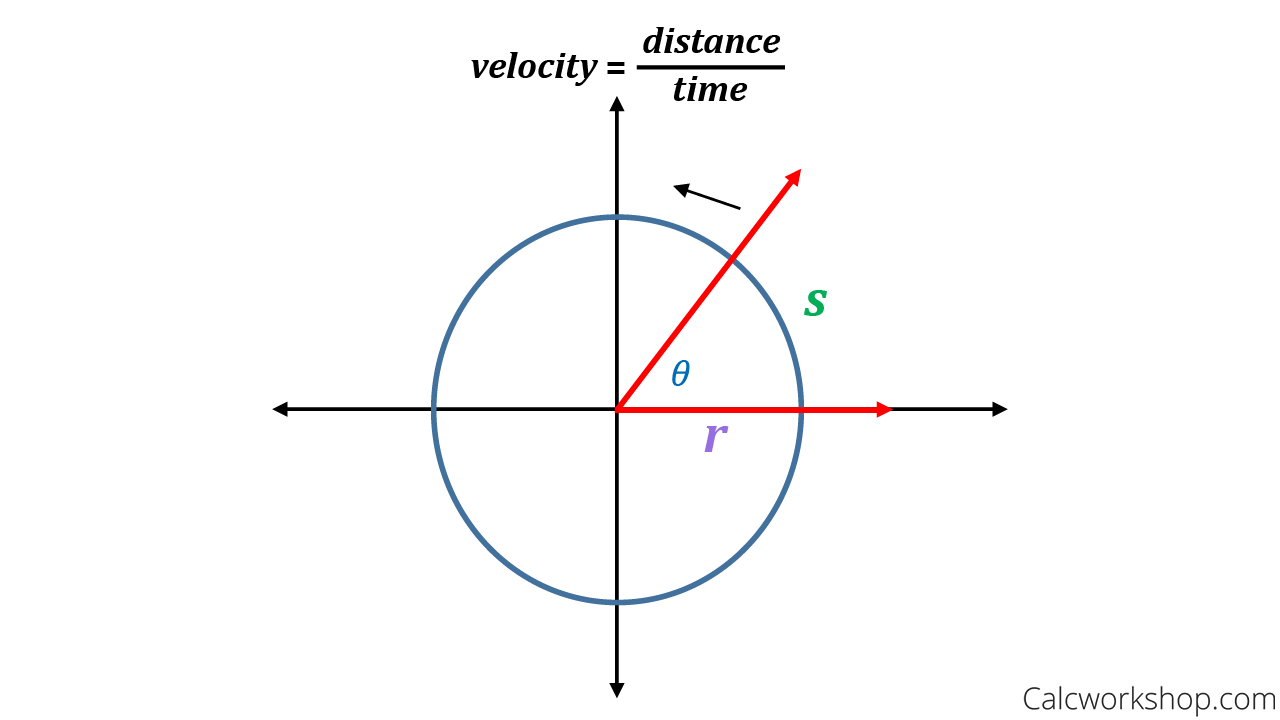Difference Between Angular and Linear Velocity Explained
Linear velocity is the rate of change of the position of an object that is traveling along a straight path. Angular velocity is the rate of change of the angular displacement over time.

How To Convert Angular Velocity To Linear Velocity Video Lesson Transcript Study Com
Linear Velocity is nothing more than the velocity of an object in a straight line whereas Angular Velocity is how much an objects spins rotates or turns as nicely summarized by Chegg.

. Precalculus 1st Edition Edit edition Solutions for Chapter 61 Problem 5E. Any object that moves has a linear velocity. We recall from our study of linear velocity that a change in the direction of the velocity vector is a change in velocity and a change in velocity is acceleration.
Angular velocity is given by the formula. However we can define an angular momentum vector which is constant throughout this motion. The angle of rotation θ 35.
DiscussExplain the difference between angular velocity and linear velocity. In place of the velocity v use the angular velocity angular velocity is the number of radians covered per second. The main difference between linear momentum and angular momentum is that linear momentum is a property of an object which is in motion with respect to a reference point ie.
Whereas the linear velocity measures how the arc length changes over time the angular velocity is a measure of how fast the central angle is changing over time. We allow this kind of Formula For Angular Velocity graphic could possibly be the most trending topic following we portion it in google benefit or facebook. Here are a number of highest rated Formula For Angular Velocity pictures upon internet.
We identified it from reliable source. Linear velocity is applied to an object that moves whereas angular velocity applies to those that turn such as a wheel the earths revolution or a spinning top. Angular velocity is the number of radiant through which an object rotates in 1 second.
There are two different types of velocity. Time taken for one complete rotation t 12 seconds. Understanding Linear Velocity Graphically.
On the other hand angular velocity only applies to objects moving along a circular path. Angular velocity is a measure of how quickly something is spinning. But these two concepts are connected as well.
Velocity is defined as the rate of change in position over a given period of time. For linear velocity it is meters per second while for angular velocity it is radians per second although radians is normally treated as unit less hence we can see that the difference is that angular velocity is about changing angles while linear velocity is concerned with how far were moving. Is measured in radians.
The linear velocity is 5 meters per second and the angular velocity is 79 radians. Its submitted by direction in the best field. Motions like blades of a rotating fan or a running wheel have angular motion.
On the other hand angular velocity only applies to objects moving along a circular path. Plug these numbers into the two equations and we get our answers. Angular velocity and linear velocity.
4 rows When an object undergoes circular motion the linear velocity of a particle is along the. Linear speed is measured in distance units per unit time eg. Linear velocity is defined as the rate of change of displacement between an object and a fixed point.
Any object changing its position with respect to the reference point while angular momentum is a property of objects which are not only changing their position but also the. Linear Velocity Formula The linear velocity depends on the distance travelled by an object with respect to time taken. The angle is known as angular displacement.
Instead of s which you use in linear travel use the angular displacement. Any object that moves has a linear velocity. Linear velocity is the number of meters traveled in 1 second of course you can use a different system of units if you wish.
Instead of acceleration a use the angular. Here are the variable substitutions you make to get the angular motion formulas. In particular why does one depend on the radius while the other does not.
Linear velocity is a measure of how fast it is moving. Linear velocity is the rate of change of the position of an object that is traveling along a straight path. Angular velocity Consider a point P moving with constant velocity along the circumference of a circle of radius r on an arc that corresponds to a central angle of measure theta in radians.
For the angular motion an angle drawn radial is used. Calculate the angular velocity and hence find out the angular acceleration if it increases its velocity to 4 radsec for the same 12 seconds. ω θ t 2 Angular speed gives the rate at which the central angle swept out by the object changes as the object moves around the circle and it is thus measured in radians per unit time.
What Are Formulas For Linear And Angular Velocity Quora

Angular And Linear Velocity Explained With 4 Terrific Examples

Define Linear Velocity Angular Velocity Absolute Velocity And State The Relation Between Linear Velocity And Angular Velocity Mechanical Engg Diploma Simple Notes Solved Papers And Videos

Angular And Linear Velocity Explained With 4 Terrific Examples
What Is Relation Between Linear Velocity And Angular Velocity Quora

Linear Speed V Radius X Angular Speed The Farther A Point Is From The Axis The Greater Its Line Physics Classroom High School Math Foldables Math Formulas
Circular Motion Linear And Angular Speed Opencurriculum

Linear Velocity Definition Formula Units Examples Applications
Comments
Post a Comment